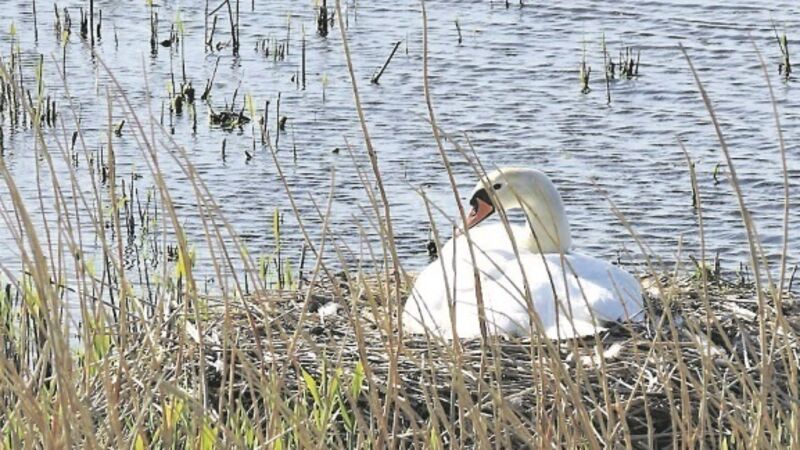Title of prettiest bird has many competitors

The stream was as silver as a mirror in the sunlight, and the egret stood tall and elegant, a perfect picture in the glittering water with tall flag irises behind it, not yet in flower. What a picture it would make, were the irises in bloom, the green stems and their brilliant yellow flowers, and the immaculate white bird beside them.
Little egrets now appear in every coastal county, and inland too, not quite 20 years after they first bred here. In the breeding season, they grow two or three thin plumes on the back of the head, up to 16cm long. With divine artistry, the long, thin, dagger-like beak, and long legs, are jet black, in contrast to the peerless white of the plumage.
They were, of course, during the 19th century, turned into hats; well, the feathers anyway and, I am told, even the whole bird, well-desiccated I presume. Having first set up a small breeding colony in 1957, they now join our gallery of especially attractive resident birds which, for me, include bullfinches, goldfinches, long-tailed tits, grey wagtails, grey herons, magpies, pheasants, yellow hammers (rarely seen now), shelduck and so on and so on.
Beauty being in the eye of the beholder, even cormorants, in full breeding trim, are worth a second looking and grey crows certainly cut a dash in their grey and black suits.
I wonder what bird my readers consider to be the most beautiful of our resident species? I’d be interested to know reader’s opinions at the Irish Examiner and will pass on the results in due course.
Please do not be influenced by the rapaciousness of the species. This is the lifestyle for which they are equipped by nature. The fact that peregrines can tear off the heads of woodpigeons and magpies predate on songbirds has nothing to do with it. It is your opinion of avian aesthetics, not behaviour, about which I enquire.
In my list, I should also include mute swans. Certainly, the pen I saw sitting on her nest in Clogheen Marsh was a creature of beauty and grace. When I first saw her, from a distance, I thought she was a white fertiliser sack blown onto a reed bed, a great desecration of the precious marshland which once narrowly escaped being turned into a golf course, and is now haunt and habitat for many wild creatures.
Coming closer, I realised it was a swan on a nest with her head so far tucked under her wing that her profile was like a full bag of fertiliser or, better still, a pillow of down in a newly-laundered pillowslip. Then, she raised her head, and now I saw her in full glory, the red beak with the shining black lore between its base and her eye, and the black base beneath. That it was the pen and not the cob doing nest duty was evident; in the breeding season, the knob at the top of the bill, always larger in males, becomes even more prominent. He wasn’t far off, ‘swanning’ down a little canal that ran off the main pond. There is something peaceful and sublime about the slow-motion movement of swans.
Shelduck were out on a flooded area of the marsh. It is unusual to see them in fields, foraging in fresh water — although they do nest and raise their chicks in ditches and abandoned rabbit burrows. They are so richly coloured, black, white, chestnut and red that the nesting ducks must hide themselves away.
Ravens, by contrast, do not need to hide; their nest on a narrow ledge high above the sea, is inaccessible. Although the fledglings are now full-feathered and ready to fly, a parent was still standing guard above it as we passed. It had been another successful breeding year. How the parents can feed all four, almost as big as themselves, is amazing; there is little carrion about, and no sheep with lamb afterbirths.
They survive, I think, mainly on shell-fish, especially mussels which they carry to a height and then drop to break the shells. Not that the beaks, even on the juveniles, do not look tough enough to split concrete.
In the nest, they look pretty and endearing like all young creatures, but they are nothing compared with their magnificent, glossy black parents. Now, who would choose a raven as their most attractive bird?










